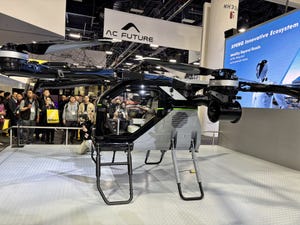Are Robots Secure? The Manufacturing Industry's Cybersecurity Blind Spot
The robot cybersecurity landscape is evolving beyond firewalls to encompass multi-layered strategies

The robotics revolution continues to unfold, but a silent threat lurks — cybersecurity. Cybercriminals prey on manufacturers with gaps in their security, and the consequences are dire. Manufacturers must bridge this security gap before robots become easy targets for hackers.
Blind Spots in the Factory: Why Robot Security Lags Behind
Industrial robots are changing manufacturing, but their increasing complexity has pushed cybersecurity issues to center stage. Traditional IT gets priority, and robots are left exposed. This could be due to a lack of awareness of robot-specific threats or the myth that robots are isolated from the network.
Hackers can exploit these gaps to steal data, disrupt production lines, or cause physical harm. As robots get more integrated, manufacturers need to close the cybersecurity gap and treat their robotic workforce with the same security attention they give to traditional IT.
Rise of the Robot Workforce: New Risks, New Coverage Needs
While the influx of industrial robots creates exciting opportunities, such as robots used for warehouse automation. However, it also comes with new insurance considerations. For starters, hackers pose a massive threat, potentially intercepting sensitive data transmitted between robots and control systems. This stolen data could include product designs, production schedules, or proprietary algorithms. More concerning, a hijacked robot could disrupt production lines, cause malfunctions, or even injure workers.
While all connected devices are vulnerable, robots with internet access or those linked to external networks are prime targets. Manufacturers must prioritize robust cybersecurity measures to mitigate these risks.
These dynamics require comprehensive coverage that addresses data breaches, production disruptions, and even potential physical harm caused by hacked robots. By working together, manufacturers and insurers can navigate the hopeful yet risk-filled world of robot-powered manufacturing.
Mitigate Manufacturing Mayhem: Robot Security Strategies
Manufacturers must implement a multi-layered security strategy to manage the risks associated with new robot efficiencies, including:
Regular security audits: Identify vulnerabilities in robots and networks with regular security assessments.
Segmentation and access controls: Segment robot networks from traditional IT infrastructure and implement strict access controls to prevent unauthorized interaction.
Software updates: Maintain up-to-date software on robots and control systems to patch vulnerabilities promptly.
Partner with risk management specialists: Work with insurance professionals who understand the unique risks associated with robotics and can help tailor a risk management plan and insurance coverage to address these specific threats.
Employee training: Train employees on cybersecurity best practices to identify and report suspicious activity around robots.
By implementing these proactive measures, manufacturers can minimize the risk of cyberattacks, operational disruptions, and potential financial losses. Remember, a robust robot security strategy is an investment in your company's future.
About the Author
You May Also Like
.jpg?width=100&auto=webp&quality=80&disable=upscale)
.jpg?width=400&auto=webp&quality=80&disable=upscale)






